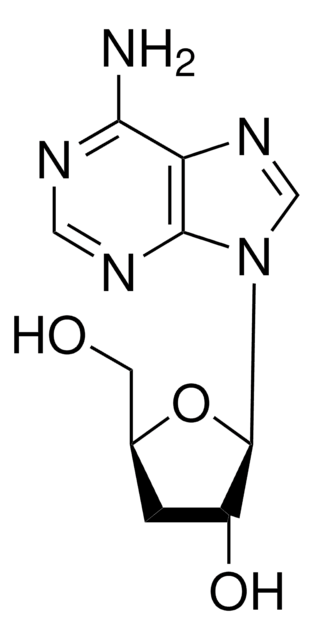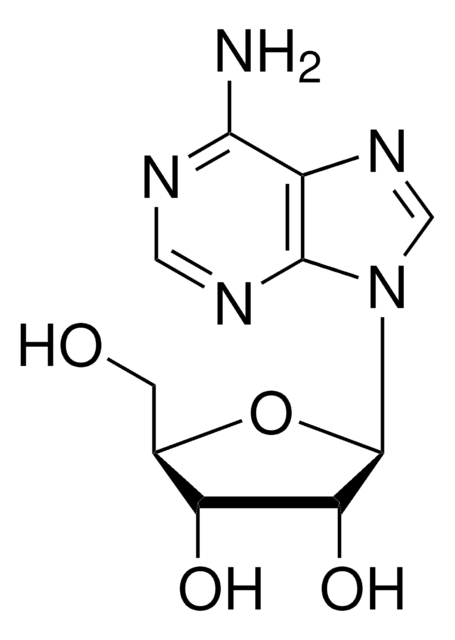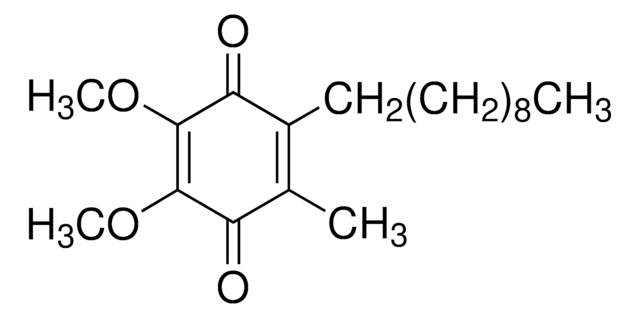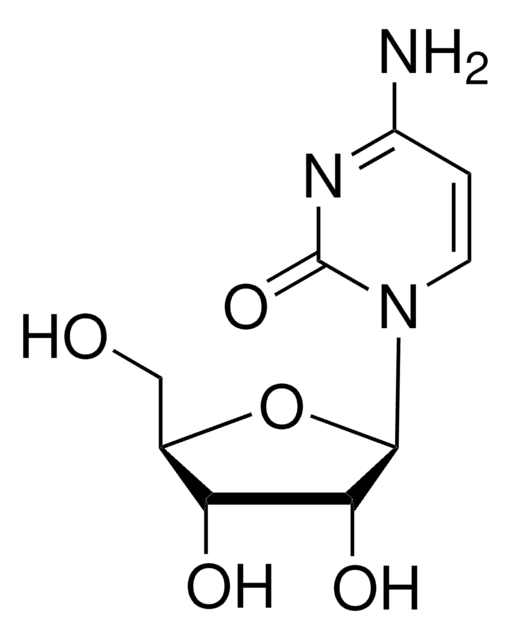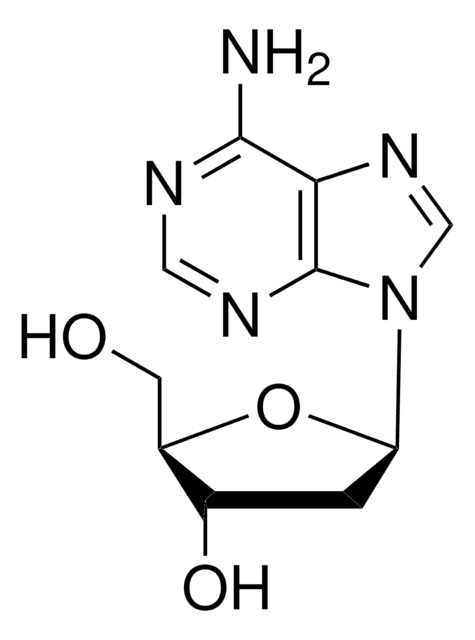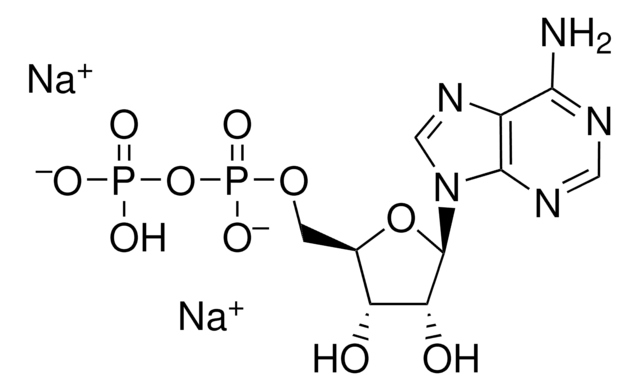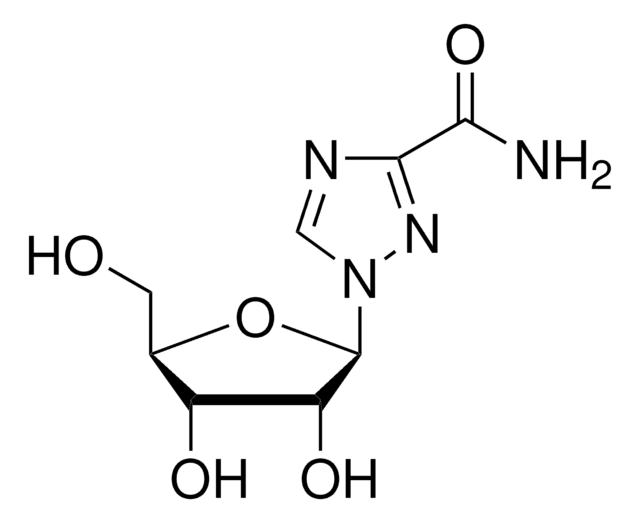C9137
Cordycepin 5′-triphosphate sodium salt
≥95%
Sinonimo/i:
3′-dATP, 3′-deoxy-ATP, 3′-Deoxyadenosine 5′-triphosphate
About This Item
Prodotti consigliati
Livello qualitativo
Saggio
≥95%
Stato
powder
PM
491.18 g/mol
Temperatura di conservazione
−20°C
Stringa SMILE
[Na].Nc1ncnc2n(cnc12)C3OC(COP(O)(=O)OP(O)(=O)OP(O)(O)=O)CC3O
InChI
1S/C10H16N5O12P3.Na.H/c11-8-7-9(13-3-12-8)15(4-14-7)10-6(16)1-5(25-10)2-24-29(20,21)27-30(22,23)26-28(17,18)19;;/h3-6,10,16H,1-2H2,(H,20,21)(H,22,23)(H2,11,12,13)(H2,17,18,19);;
FRGBONDYLMUOMH-UHFFFAOYSA-N
Descrizione generale
Applicazioni
- as a transcriptional inhibitor in RNA decay assay
- to inhibit polyadenylation in HEK293T cells before harvesting for in- vitro interaction studies through co-immunoprecipitation (co-Ips)
- as a positive control in in vitro assays for polymerase inhibition
- as a precursor to produce cordycepin monophosphate
Azioni biochim/fisiol
Avvertenze
Warning
Indicazioni di pericolo
Classi di pericolo
Acute Tox. 4 Oral - Carc. 2 - Eye Irrit. 2 - Skin Irrit. 2 - STOT SE 3
Organi bersaglio
Respiratory system
Codice della classe di stoccaggio
11 - Combustible Solids
Classe di pericolosità dell'acqua (WGK)
WGK 3
Dispositivi di protezione individuale
Eyeshields, Gloves, type P3 (EN 143) respirator cartridges
Scegli una delle versioni più recenti:
Possiedi già questo prodotto?
I documenti relativi ai prodotti acquistati recentemente sono disponibili nell’Archivio dei documenti.
I clienti hanno visto anche
Il team dei nostri ricercatori vanta grande esperienza in tutte le aree della ricerca quali Life Science, scienza dei materiali, sintesi chimica, cromatografia, discipline analitiche, ecc..
Contatta l'Assistenza Tecnica.